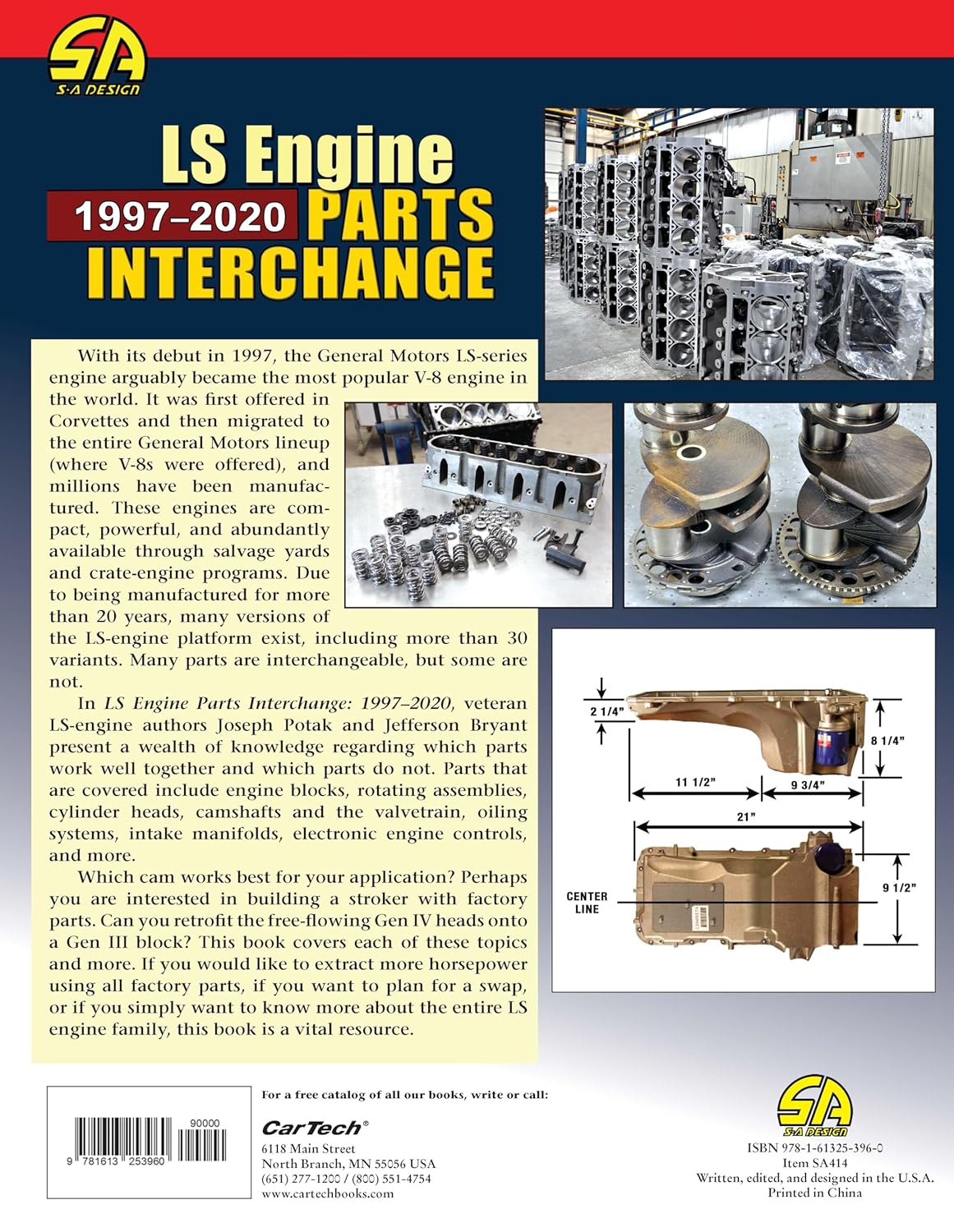
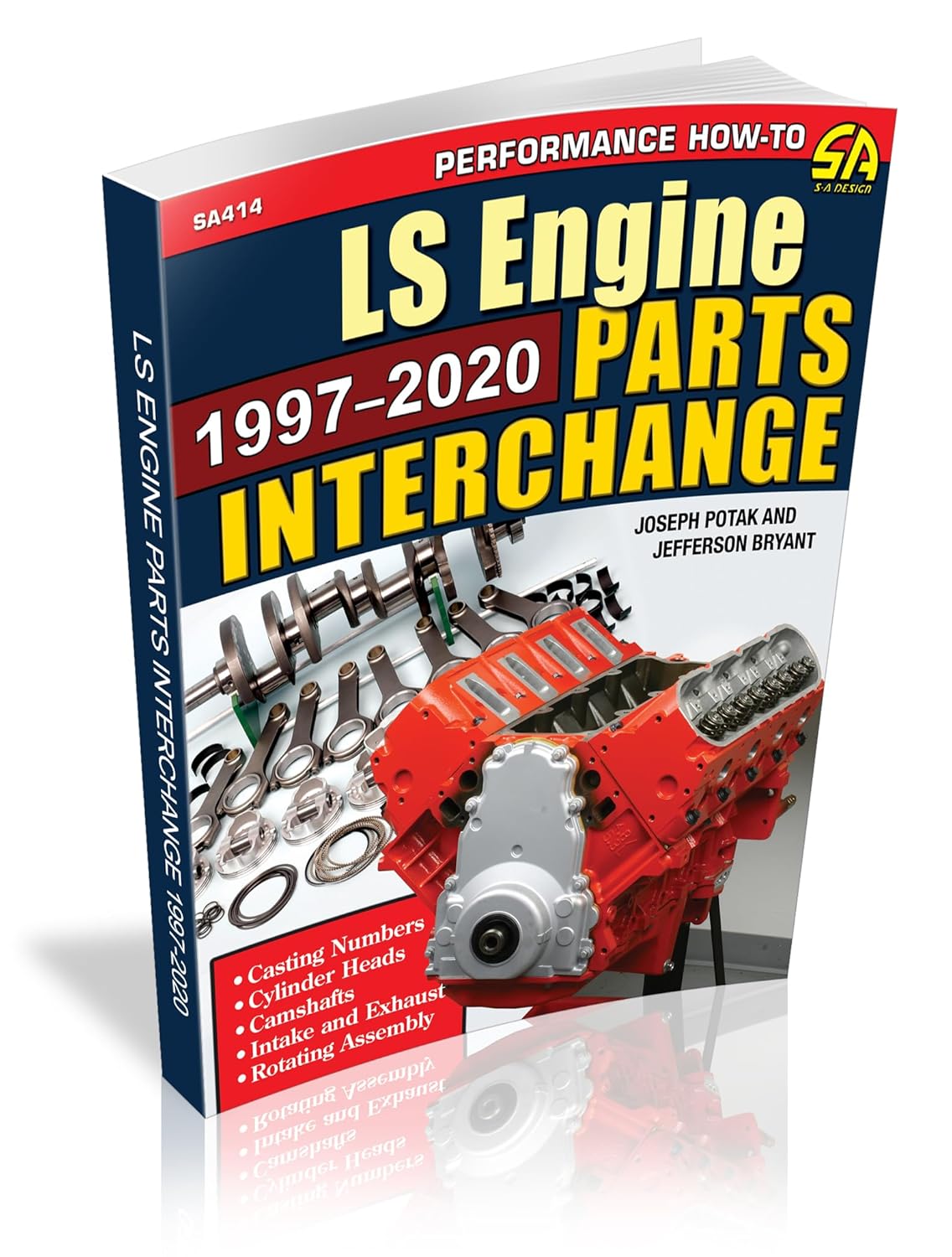
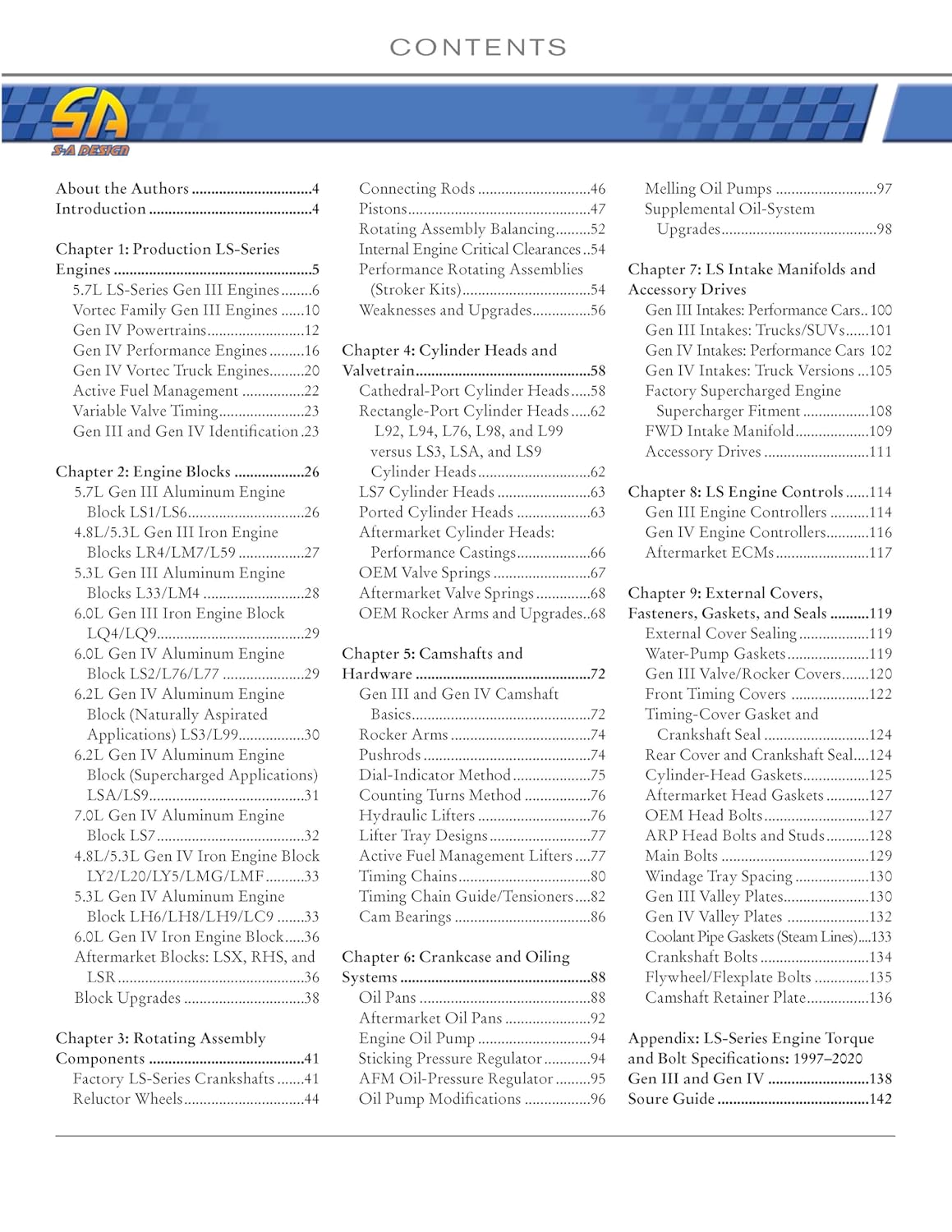
Mix and match parts for your LS engine to maximize power on a budget!
With its debut in 1997, the General Motors LS-series engine arguably became the most popular V-8 engine in the world. It was first offered in Corvettes and then migrated to the entire General Motors lineup (where V-8s were offered), and millions have been manufactured. These engines are compact, powerful, and abundantly available through salvage yards and crate-engine programs. Due to being manufactured for more than 20 years, many versions of the LS-engine platform exist, including more than 30 variants. Many parts are interchangeable, but some are not.
In LS Engine Parts Interchange: 1997–2020, veteran LS-engine authors Joseph Potak and Jefferson Bryant present a wealth of knowledge regarding which parts work well together and which parts do not. Parts that are covered include engine blocks, rotating assemblies, cylinder heads, camshafts and the valvetrain, oiling systems, intake manifolds, electronic engine controls, and more.
Which cam works best for your application? Perhaps you are interested in building a stroker with factory parts. Can you retrofit the free-flowing Gen IV heads onto a Gen III block? This book covers each of these topics. If you would like to extract more horsepower using all factory parts, if you want to plan for a swap, or if you simply want to know more about the entire LS engine family, this book is a vital resource.
From the Publisher
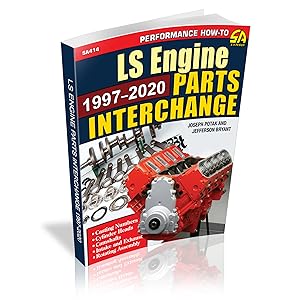

In LS Engine Parts Interchange: 1997–2020, veteran LS-engine authors Joseph Potak and Jefferson Bryant present a wealth of knowledge regarding which parts work well together and which parts do not. Parts that are covered include engine blocks, rotating assemblies, cylinder heads, camshafts and the valvetrain, oiling systems, intake manifolds, electronic engine controls, and more.
Which cam works best for your application? Perhaps you are interested in building a stroker with factory parts. Can you retrofit the free-flowing Gen IV heads onto a Gen III block? This book covers each of these topics. If you would like to extract more horsepower using all factory parts, if you want to plan for a swap, or if you simply want to know more about the entire LS engine family, this book is a vital resource.
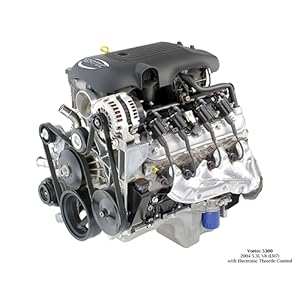

History
GM SUVs and trucks featured LS engines, although they kept the Vortec moniker. The Gen III/IV Vortec engines are in the LS-series family but have a few differences, including being manufactured with iron blocks. This LM7 Vortec was the most-produced Gen III engine and is the most popular engine for LS swaps due to its availability and durability. (Photo Courtesy General Motors)
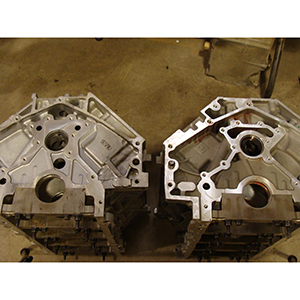

Blocks
The 1997–1998 blocks (left) and Gen III Vortec blocks have two holes drilled in the rear of the block for oiling. The later Gen III/IV blocks have a large open port for better flow. Early blocks can be modified by milling a channel between the two holes to increase oil flow. This is a common cause of top-end oiling failures.
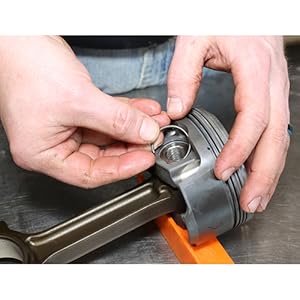

Rotating Assembly Components
After 2004, all LS rods use floating piston pins that are retained by a simple circlip on each side. While it is possible to reuse circlips, it is best to replace them, as they can be damaged when they are removed.
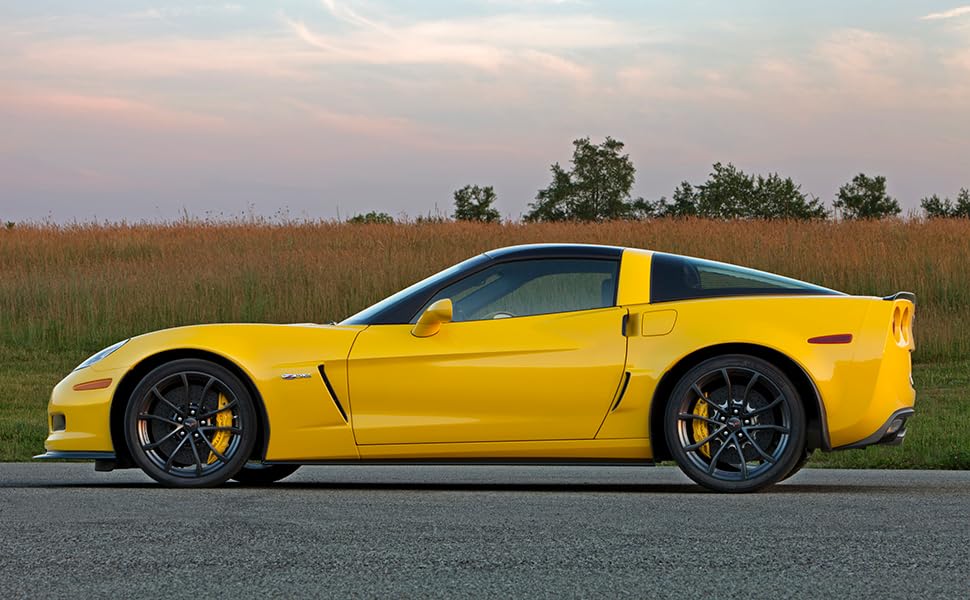

LS Series Engines
The 1997 C5 Corvette featured the first Gen III small-block (the LS1), which boasted 345 hp with the 5.7L aluminum engine. (Photo Courtesy General Motors)
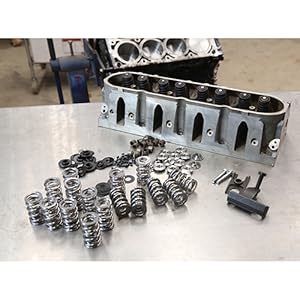

Cylinder Heads and Velvetrain
Vortec truck heads range in performance, but even the lowly 706 and 862 (shown here) castings have small 1.89-inch intake valves that are very capable. Drop one of these small-chambered heads onto an LS1, and the compression is bumped up about three-quarters of a point to 11:1.
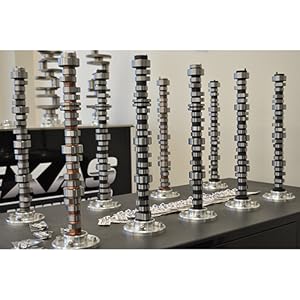

Camshafts and Hardware
LS camshafts run from pedestrian to mega-lift performance. The cam controls the spirit of the engine. Getting the right cam is critical to achieving your goals. The four cams with a groove in the second journal are VVT cams.
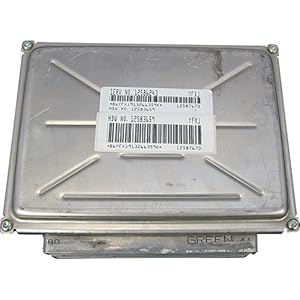

LS Engine Controls
The “Blue/Green” ECM was used from 2003–2007. The connectors are blue and green and are predominantly DBW ECMs. They can be converted to DBC by modifying the internals. Few of these are drive-by-cable-only (2004 GTO, 4.3L truck, full-size van to 2006). They also have built-in transmission controls.


Publisher : SA Design
Publication date : April 15, 2025
Language : English
Print length : 144 pages
ISBN-10 : 1613253966
ISBN-13 : 978-1613253960
Item Weight : 1.06 pounds
Dimensions : 8.5 x 0.75 x 11 inches
Best Sellers Rank: #136,067 in Books (See Top 100 in Books) #53 in Automotive Engine Mechanics #807 in How-to & Home Improvements
Customer Reviews: 5.0 5.0 out of 5 stars 11 ratings var dpAcrHasRegisteredArcLinkClickAction; P.when(‘A’, ‘ready’).execute(function(A) { if (dpAcrHasRegisteredArcLinkClickAction !== true) { dpAcrHasRegisteredArcLinkClickAction = true; A.declarative( ‘acrLink-click-metrics’, ‘click’, { “allowLinkDefault”: true }, function (event) { if (window.ue) { ue.count(“acrLinkClickCount”, (ue.count(“acrLinkClickCount”) || 0) + 1); } } ); } }); P.when(‘A’, ‘cf’).execute(function(A) { A.declarative(‘acrStarsLink-click-metrics’, ‘click’, { “allowLinkDefault” : true }, function(event){ if(window.ue) { ue.count(“acrStarsLinkWithPopoverClickCount”, (ue.count(“acrStarsLinkWithPopoverClickCount”) || 0) + 1); } }); });
User Reviews
Be the first to review “LS Engine Parts Interchange: 1997-2020: 1997-2020”

Original price was: $32.95.$28.00Current price is: $28.00.

![Pinnacle Studio 26 Ultimate | Pro-Level Video Editing & Screen Recording Software [PC Key Card]](https://m.media-amazon.com/images/I/81NS+ieWQpL._AC_SL1500_.jpg)




There are no reviews yet.